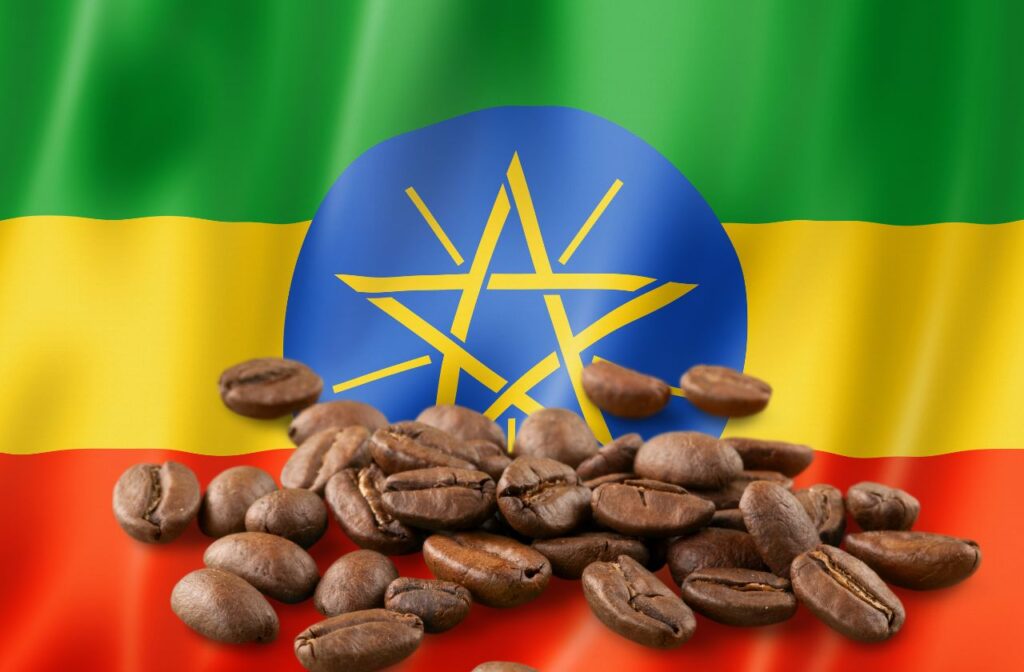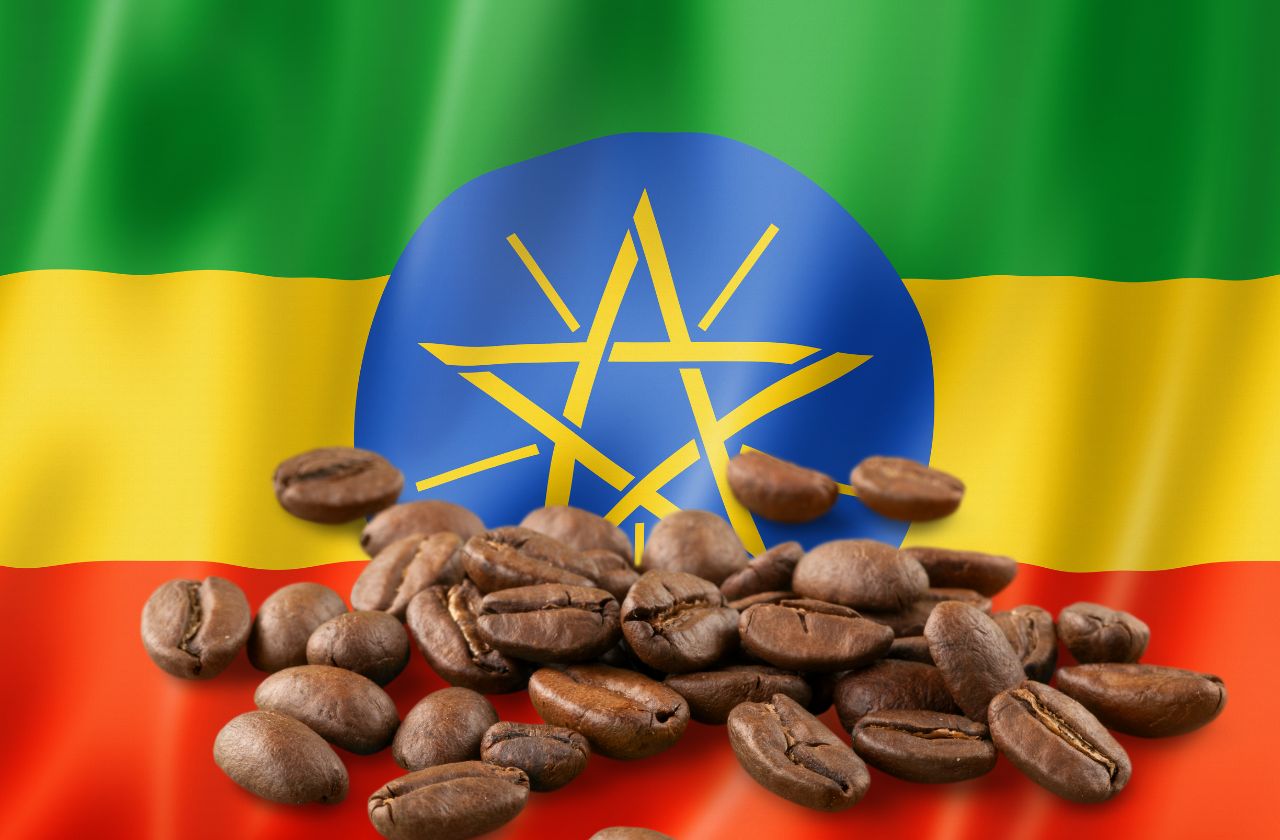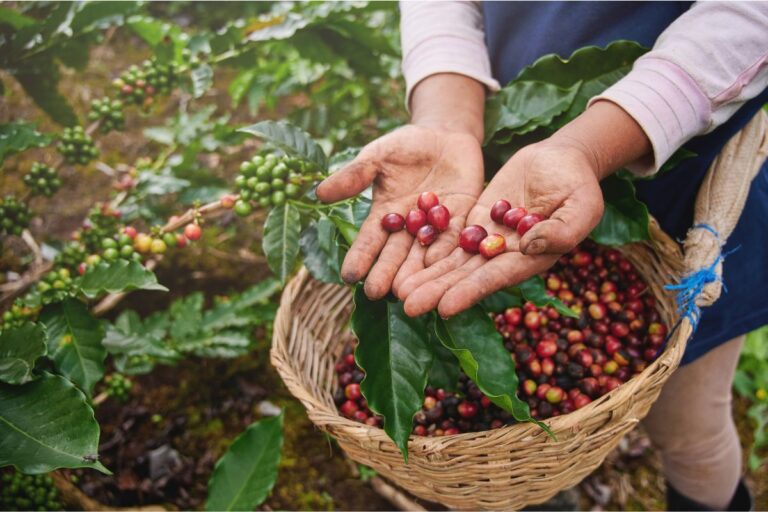Where Did Coffee Originate? The Global Journey of Coffee
Coffee, one of the world’s most beloved beverages, is enjoyed by millions daily. Yet, its origins are shrouded in mystery and legend. This article aims to unravel the rich history and journey of coffee, tracing its roots back to where it all began. Where did coffee originate, and how did it spread globally?
Coffee’s origins trace back to Ethiopia, where legend speaks of Kaldi and his energetic goats. The first known use was in Yemen, leading to its spread across the Arabian Peninsula and later globally via trade routes. Coffee houses emerged, becoming social and cultural hubs.
From the highlands of Ethiopia to its spread across continents, coffee’s story is as rich and complex as its flavors. We’ll explore ancient legends, sift through historical records, and follow the path of coffee as it became a global phenomenon, shaping cultures and economies along the way.
Where Did Coffee Originate in Ancient Times?

The undeniable attractiveness of the aroma of freshly brewed coffee is a familiar comfort to millions across the globe. Yet, few pause to ponder the fascinating journey this beverage has taken. From humble beginnings in ancient lands to its current status as a global commodity, coffee boasts a rich history that spans continents and cultures.
While the exact origin of coffee remains shrouded in the mists of time, the Ethiopian plateau is widely considered its birthplace. With the rise of trade networks, coffee’s popularity transcended geographical boundaries. By the 17th century, it had conquered Europe, igniting a new wave of social interaction within coffee houses and fueling the intellectual discourse of the Enlightenment.
Today, coffee continues to weave its way into the fabric of our daily lives, offering a comforting ritual and a source of energy that fuels our endeavors. As we savor each cup, it’s worth taking a moment to appreciate the remarkable journey this humble bean has taken from the Ethiopian highlands to our own kitchens.
Weird Coffee Tip: The quality of your coffee grind can make or break the quality of your coffee. Choose a top quality coffee grinder to get the best out of your coffee beans!
CafeSing Orca Hand Grinder: A Convergence of Craftsmanship and Coffee Mastery
The Legend of Kaldi and the Dancing Goats
One of the most enchanting tales about coffee’s origins centers around Kaldi, an Ethiopian goat herder. According to legend, Kaldi noticed his goats became unusually energetic after eating the red berries from a certain bush. Intrigued, Kaldi tried these berries himself and experienced a similar invigorating effect. The story goes that a monk observed Kaldi and his lively goats, and decided to make a drink with the berries, discovering its ability to keep him awake during long hours of prayer.
While this charming story is a staple in coffee lore, historical evidence supporting it is scarce. However, it serves as a symbolic representation of coffee’s discovery and its energizing properties. The legend lays the groundwork for understanding how coffee, initially an obscure wild plant, caught the attention of humans and began its journey across the world.
Early Historical Records of Coffee

The first verifiable records of coffee being used as a stimulant date back to the 15th century in the Sufi monasteries of Yemen. However, its journey likely began much earlier in Ethiopia, where coffee (Coffea arabica) is believed to have originated. Historical accounts suggest that Ethiopian nomadic mountain tribes would have first consumed coffee as a fruit or in a porridge-like mixture.
By the 15th century, coffee had reached Yemen and the Arabian Peninsula, marking a significant turn in its history. It was in Yemen that coffee beans were first roasted and brewed, similar to how we prepare it today. The port city of Mocha in Yemen became a pivotal hub for coffee trade, with the beans spreading to the rest of the Middle East. The religious significance of coffee in Sufi rituals also played a crucial role in its initial spread.
Coffee’s introduction to the Arabian Peninsula heralded the beginning of its journey from a wild plant to a cultivated and cherished beverage. This transition laid the foundation for coffee’s future as a global commodity.
Coffee’s Journey to the Arabian Peninsula
Coffee’s migration to the Arabian Peninsula marked a crucial chapter in its history. By the 15th century, it had reached Yemen, where its cultivation began in earnest. The climate and soil conditions in Yemen were ideal for coffee farming, leading to the development of the first coffee plantations. The city of Mocha, in particular, became synonymous with coffee, giving rise to the term “mocha” used to describe a coffee variety and flavor.
In Yemen, coffee wasn’t just a crop; it became a cultural and social staple. Coffee houses, known as ‘qahveh khaneh’, began appearing in cities across the Middle East. These establishments became centers for social interaction, intellectual discussion, and entertainment. The popularity of these coffee houses spread rapidly, with their influence reaching as far as the Ottoman Empire and later Europe.
This period also saw the evolution of coffee from a simple beverage to a symbol of hospitality and social engagement. The rituals and customs surrounding coffee preparation and consumption became integral parts of various cultures in the Arabian Peninsula, setting the stage for coffee’s global cultural impact.
The Expansion of Coffee Culture

Coffee’s journey from the Arabian Peninsula to the rest of the world was marked by trade, conquest, and cultural exchange. The Ottoman Empire played a significant role in spreading coffee throughout its territories, including North Africa, Eastern Europe, and parts of the Middle East. The first coffee house in Constantinople (now Istanbul) opened in the 16th century, signaling the start of a coffee culture that would spread across the Ottoman lands.
The Introduction of Coffee To Europe
Europe encountered coffee in the 17th century, and it quickly took root. Venice, a major trading port with close ties to the Ottoman Empire, was among the first European cities to embrace coffee. Coffee houses soon sprang up across Europe, from London to Paris, becoming hubs of social activity, political debate, and artistic expression.
The spread of coffee culture was not without controversy. Its popularity often led to bans and restrictions, as authorities feared the free exchange of ideas in coffee houses. However, these attempts to suppress coffee consumption inadvertently fueled its mystique and popularity.
The Inevitable Spread of Coffee Culture
By the 18th century, coffee had become a global commodity. Its cultivation spread to colonies in the Caribbean, South America, and Asia, reshaping economies and agricultural practices worldwide. Coffee houses continued to play a vital role in social and cultural movements, embodying the spirit of the Enlightenment and revolution.
Modern Coffee: A Global Phenomenon
Today, coffee stands as a global cultural icon, transcending its origins and becoming a staple in diverse cultures. The modern coffee landscape is characterized by an incredible variety of preparations and flavors, reflecting local tastes and traditions. Countries like Brazil, Colombia, Vietnam, and Ethiopia are renowned for their coffee production, each offering unique bean varieties and flavor profiles.
The evolution of coffee has continued into the 21st century, with trends like specialty coffee, sustainable and ethical sourcing, and artisanal brewing methods gaining prominence. The rise of third-wave coffee, which emphasizes bean quality, flavor nuances, and artisanal methods, showcases coffee’s ongoing evolution as both a commodity and an art form.
Coffee’s journey from the Ethiopian highlands to every corner of the globe is a showcases its enduring appeal. It has played a role in historical events, influenced economic policies, and fostered community and creativity. As we sip our morning brew, we partake in a tradition that spans centuries and connects us to different parts of the world.
The Continuation of The Coffee Story
The story of coffee, from its mystical origins in the Ethiopian highlands to its status as a beloved global beverage, is a fascinating journey through history and culture. It illustrates how a simple bean can influence economies, shape social customs, and bring people together. Coffee’s journey is not just about the spread of a popular drink; it’s about the exchange of ideas, the evolution of customs, and the shared human experience.
As we reflect on this journey, it becomes clear that coffee is more than just a beverage; it’s a cultural phenomenon that embodies tradition, innovation, and connection. Each cup of coffee we enjoy is a part of this rich and ongoing story, a story that continues to evolve and inspire across generations and geographies.
The final chapter in the story of coffee has not yet been written, and with each new weird coffee person who develops a taste and an interest in this beverage will continue to write new and exciting chapters to the ongoing saga!
-
Espresso Express eBook
R180,00 -
From Bean To Brew eBook
R450,00 -
Great Coffee, Made Simple
R0,00









